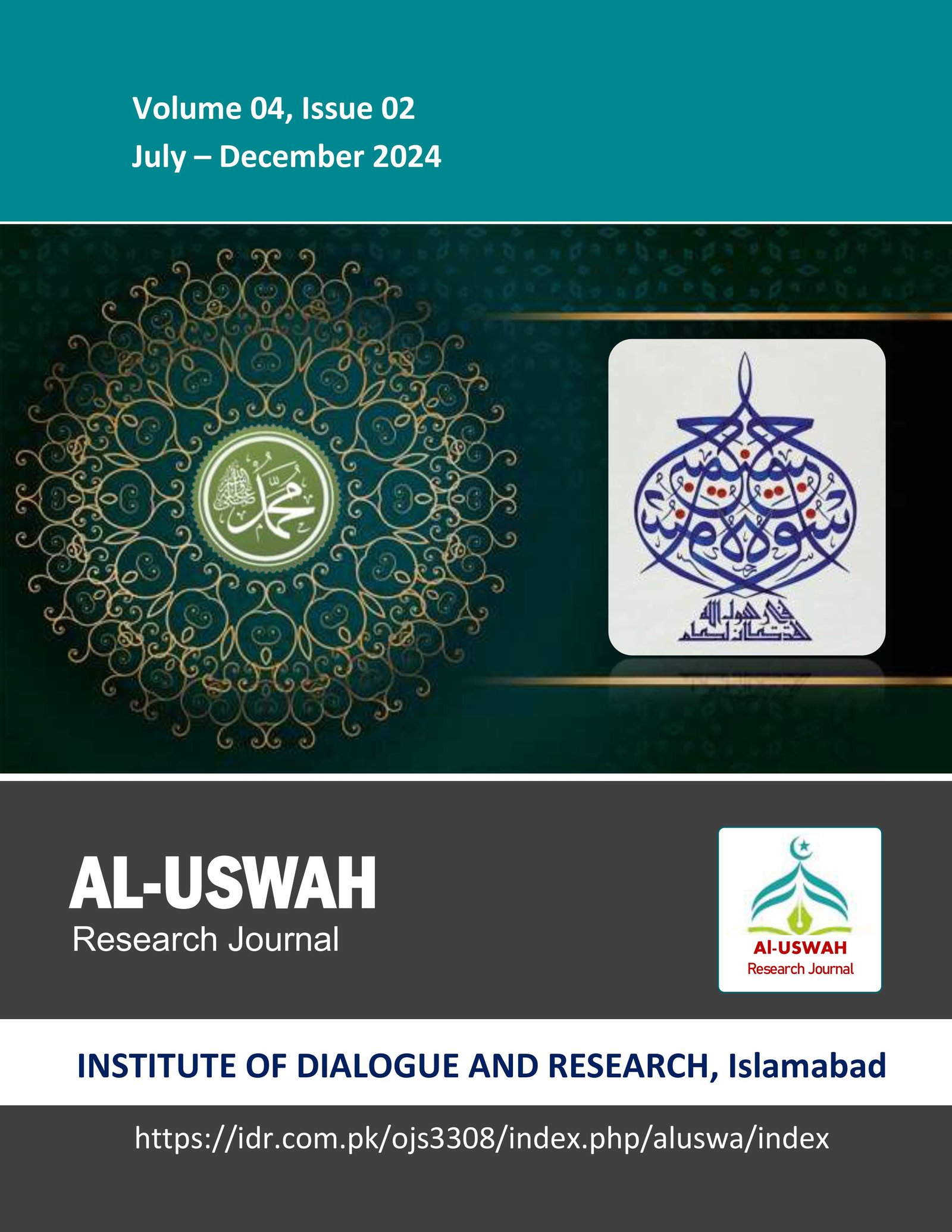خواطر کا مفہوم اور بیعتِ طریقت کی اہمیت: لمعات التنقیح کا تجزیاتی مطالعہ
The Concept of “Khawātir” (Thoughts) and the Significance of the "Bay'at-e-Ṭariqat" (Pledge for Spiritual Guidance): An Analytical Study of 'Lama'āt al-Tanqiḥ fi Sharḥ Mishkāt al-Maṣābiḥ
Keywords:
Thoughts (خواطر, Pledge of Spiritual Guidance (بیعتِ طریقت), Sufism, Heart Purification, Spiritual Guide (شیخ), Ethical Development, Spiritual Growth, Steadfastness (استقامت)Abstract
This article elucidates the concepts of "thoughts" (خواطر) and "the pledge of spiritual guidance" (بیعتِ طریقت), emphasizing their significance and necessity within the framework of Sufism. It clarifies the terminological meaning of the pledge, referencing the root (ب-ی-ع) in the Holy Quran to establish a foundational understanding. The discourse highlights the importance of establishing a connection with a spiritual guide (شیخ) for the purpose of heart purification, while also exploring the fundamental principles of Sufism. Central to this discussion is the notion that heart purification is essential, alongside a detailed examination of thoughts, which encompasses the ideas that emerge in the human mind and their subsequent impacts. Additionally, the article addresses the concept of steadfastness (استقامت), which is portrayed as a vital means for attaining spiritual growth and moral enhancement through the pledge. Overall, this comprehensive analytical study underscores that the pledge of spiritual guidance constitutes not merely a spiritual contract but also plays an integral role in fostering an individual's ethical and spiritual development.








